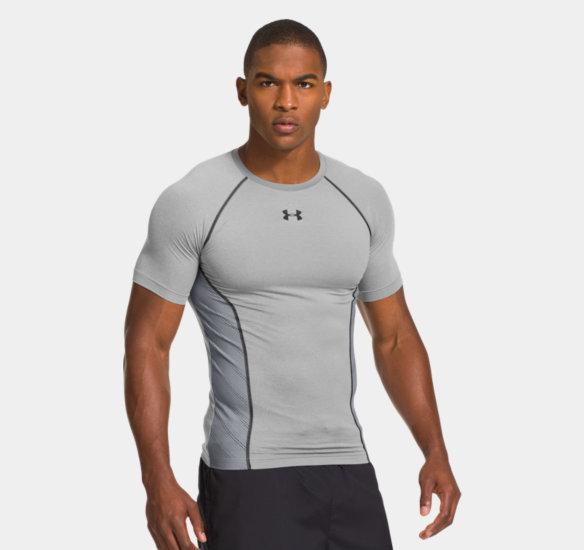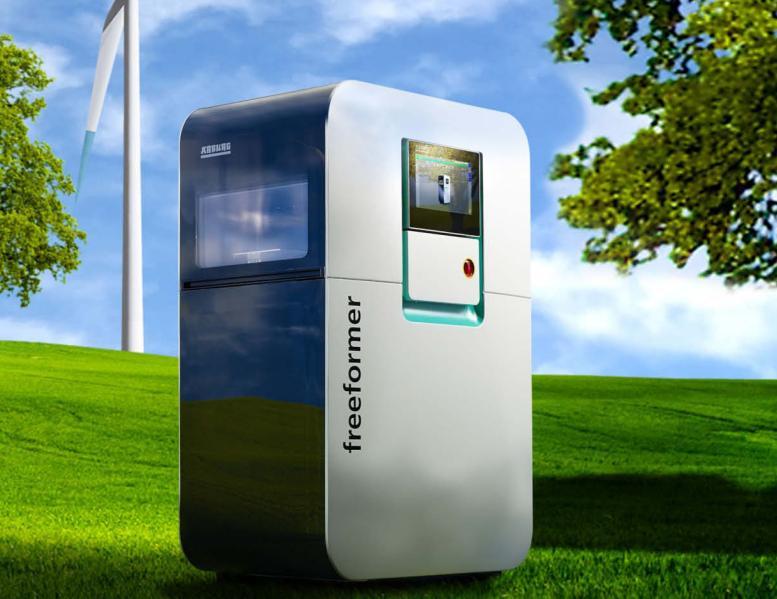 Most people simply don’t realize that 3D printing has been in use for close to 25 years, by companies, that from an outsider’s point of view, don’t appear to have a use for the technology. Most of us know by now that corporations such as General Electric, Airbus and Ford have been using 3D printing (Additive Manufacturing) in their rapid prototyping and even final product designs. With this said, however, only recently have we become aware of companies like Nike, which has used 3D printing to develop a custom sports bag.
Most people simply don’t realize that 3D printing has been in use for close to 25 years, by companies, that from an outsider’s point of view, don’t appear to have a use for the technology. Most of us know by now that corporations such as General Electric, Airbus and Ford have been using 3D printing (Additive Manufacturing) in their rapid prototyping and even final product designs. With this said, however, only recently have we become aware of companies like Nike, which has used 3D printing to develop a custom sports bag.
Nike, isn’t the only athletic wear company that utilizes 3D printing to help in the manufacturing process. Yesterday, I had the opportunity to speak with Alan Guyan, Senior Innovation Manager at Under Armour. He is the companies “3D printing expert”, and is scheduled to give a presentation on their 3D printing endeavors at the TCT Show this September.
How is Under Armour Planning to Use 3D Printing?
This first thing I asked Guyan, as any curious tech geek would, was if Under Armour has any plans to begin using 3D printing in the development of final products. The answer I receive was as expected. “I’m not going to comment on any of that,” he told me.
Obviously Guyan wasn’t going to spill the beans on any future product that the company has not yet announced publicly. With this said, he did give me an inclination that something “BIG” was coming.
“If you want to put something in your hat (figuratively), defintely something big is going to happen in the future,” Guyan told us. “What that is, is really cool. It’s going to change the game in the sports community.”
3D printing is known for its ability in creating 100% customized products, something that could certainly be useful in the apparel industry. “One of the number one benefits of 3D printing is customization,” Guyan explained. “Everybody is unique. Like if you want to go buy a baseball cap, you might say, ‘man I like this hat, but it doesn’t fit me well’. If you had a 3D printed hat, for example, now it fits everybody, since every 3D printed hat is unique.”
Guyan wasn’t hinting at a potential 3D printed baseball cap from Under Armour. He was just using it as an example to show the benefits of this incredible technology. He also emphasized that 3D printable materials are getting better and better as time goes on, and stated that we are “light-years ahead of where we were 5 years ago”, when considering the materials available today.
The Future of 3D Printing Actual Clothing
Guyan, not only sees 3D printing as a technology that will help in the prototyping of products, but he believes that there are far greater benefits coming in the future, whether that be for Under Armour or other companies and individuals.
“3D printing has been around for 25 years, however, today it is a black and white TV, he explained. “Tomorrow it is going to be a color TV, and here in the near future, it’s going to be one of those nice 60″ flat screen TVs.”
When we think into the future, it is very hard to see exactly which direction 3D printing will take us. Will it remain a technology that is meant for large companies, or will it fully be implemented within our homes? Will we remain limited to only printing objects in traditional FDM compatible materials such as plastics, or will we eventually be printing out just any material that we can think of, from the comfort of our living rooms? Could we one day be able to print clothing directly from our own desktop 3D printers? Perhaps…. Perhaps there is something already in the works……

Image credit – TCT Magazine
“There’s a 3D printer for apparel out there currently,” Guyan stated. “It’s very beta, and generic looking, but one thing you need to think about is 3D knitting. There are companies out there that are doing this. It’s not technically coming from a ‘3D model’, but it’s coming from a 3D knit structure.”
This technology is out there, but because of scalability issues, it’s not commercially feasible just yet. Guyan believes that this will all come in the future though. What he discussed next was an idea that caught me by surprise, and something that made me rethink the entire methodology of the clothing industry. It was a concept which he read a while back, and believes might actually be onto something.
Washers and Dryers are both expensive to purchase, as well as pricey to run on a daily or weekly basis. They eat up resources (water, soap, electricity), and take up time out of our days. The idea that Guyan touched on was one of a clothing printer that would eliminate the need to purchase, store, wash, or fold clothing, like we have been doing since caveman times.
“Every home, instead of having a washer and dryer would have a (3D) printer. You would program your outfits for the week, and [the 3D printer] would be printing on hand as you need them, over night, or some of them would be programmed and print all week long. The whole [idea] of people buying shirts, stacking them and storing them…. what if you didn’t have to do that anymore? What if you didn’t have to wash any laundry? What if your shirt was disposable?”
The idea makes you think. Could this be the future of apparel? When you were done with your outfit, instead of throwing it in the washer, you would simple feed it back into the 3D printer, which would break it down and print the next outfit. Of course this is only a concept, but as Guyan explains it’s still a stepping stone in the right direction. Whether or not we will see this in the future, has yet to be decided, but it certainly is food for thought.
Under Armour’s Unique Way of Innovating
Guyan explained that Under Armour is a really unique company, one which opens its doors to both innovation and outsiders at the same time. They have special innovation days, held worldwide, where they allow people to walk in off of the street, and try to sell them on product ideas. This has already benefited the company on several occasions. One product idea that came to the company this way was the MagZip. More details on this product can be found here. The MagZip is expected to be on shelves in September in the amount of 600,000 units. Unlike a lot of companies, Guyan said that Under Armor prefers to keep the product inventors involved, giving them credit, and in turn allowing them to generate hefty royalties.
“At Under Armour, we are experts at a lot of things, but we aren’t experts at everything.” he told us. “We know that the other experts are out there. If we don’t talk to these experts, we will never be the experts.”
Rather than trying to work around patents, like a great deal of today’s companies do, in order to try and increase profits and prevent themselves from having to pay royalties, Under Armour embraces the aspect of working WITH those inventors who come up with unique, innovative ideas. Because they do things this way, they have found that they have certain inventors who not only bring them an initial idea, but in the future also come to them with more unique product inventions, after seeing how easy it is to deal with the company.
Problems with 3D Printing & Potential For Future Companies in the Space
Guyan is a big supporter of 3D printing. I can’t emphasize that enough. However, he also sees problems with today’s business model. A model which is complicated by patents, and lack of innovation on the software side of things. He also believes that there are companies out there waiting to jump into the 3D printing space, and perhaps become manufacturers of 3D printers themselves.
He explained that all of the current 3D printing manufacturers are just that, “3D printing manufacturers”. They are “machine manufacturers”. There are companies out there such as Arburg that have over 50 years of experience building injection molding machines. He believes that companies like this may be able to create 3D printers capable of much more than today’s machines can handle. In fact, Arburg has recently finished building their own 3D Printer, called the FreeFormer. With patents expiring we could see more and more companies like Arburg begin to jump into the industry.
Guyan believes that current 3D printer manufacturers are “horrible with software”. Many of their software is outdated, and requires outdated operating systems to run, such as Windows XP. The future of this technology is in the cloud, not on locally operated machines. In speaking about today’s 3D printing software, Guyan noted:
“There are so many bugs in the software, like basic bugs that you hit one button, and you have to call the service guy. I hit the [wrong button] and it locks the machine out. That’s stupid. [Then] I’m down for 1-3 days, until the service guy can get there. We have a kill switch that wipes the software out and starts over. The only time I’ve seen that is in the early days of machine centers, where you had a log file you needed to clear out.”
Evidently there are massive improvements needed on the software side of things according to Guyan, who has tremendous experience in running industrial level 3D printers. Companies seems to be so swift to move on any advancements on the hardware side of things, but apparently many of these companies are neglecting the software side.
Conclusion
With Guyan at the helm of the 3D printing operations at Under Armour, it is evident that the company has a few tricks up their sleeves. From the sounds of things, we may possibly be hearing about something “Big” this coming September, at the TCT show, where he will be giving a presentation on 3D printing. Perhaps I’m wrong and the “Big” announcement will come later, but without a doubt Under Armour, as well as other apparel companies seem to be on a path of complete customization of sportswear and clothing in the near future. Just how near the future is? We don’t know.
Discuss this article, as well as what you think the future of clothing and 3D printing will have together in the 3D printed clothing forum thread on 3DPB.com
Subscribe to Our Email Newsletter
Stay up-to-date on all the latest news from the 3D printing industry and receive information and offers from third party vendors.
Print Services
Upload your 3D Models and get them printed quickly and efficiently.
You May Also Like
Heating Up: 3D Systems’ Scott Green Discusses 3D Printing’s Potential in the Data Center Industry
The relentless rise of NVIDIA, the steadily increasing pledges of major private and public investments in national infrastructure projects around the world, and the general cultural obsession with AI have...
3DPOD 260: John Hart on VulcanForms, MIT, Desktop Metal and More
John Hart is a Professor at MIT; he´s also the director of the Laboratory for Manufacturing and Productivity as well as the director of the Center for Advanced Production Technologies....
Etsy Design Rule Change Reduces Selection of 3D Printed Goods
Online marketplace Etsy has implemented a rule change requiring all 3D printed goods on the site to be original designs. The update to the site’s Creativity Standards states, ¨Items produced using...
E-Beam OEM Wayland Additive Partners with USC Racing to 3D Print Titanium Exhaust Collector
Every year, standards organization SAE International holds a competition called Formula SAE, in which students from both undergraduate and graduate programs design, build, and race small formula-style race cars. For...




































